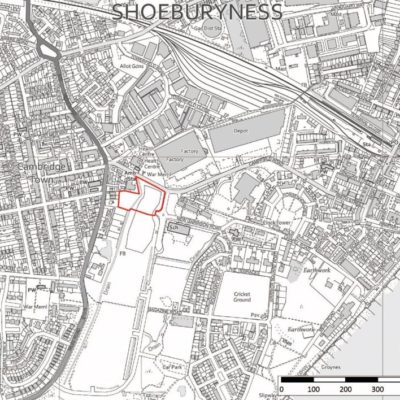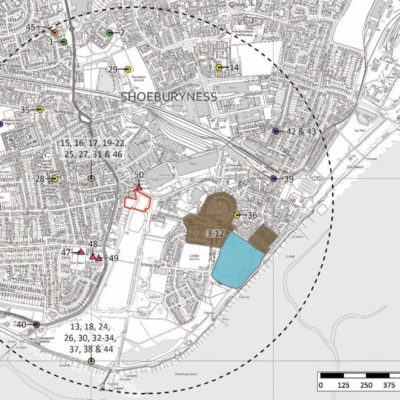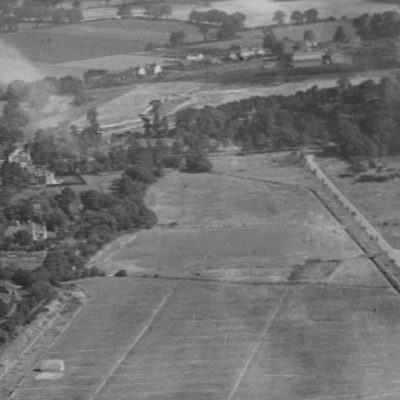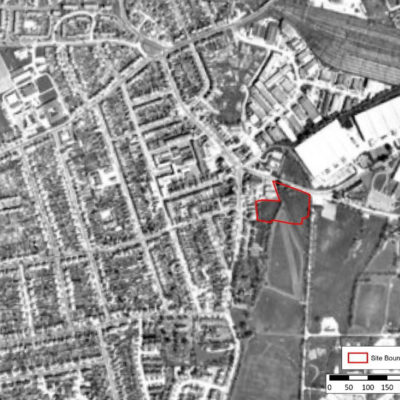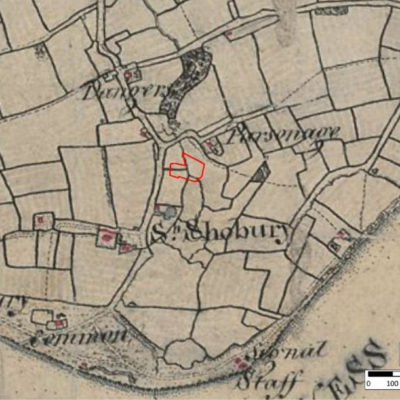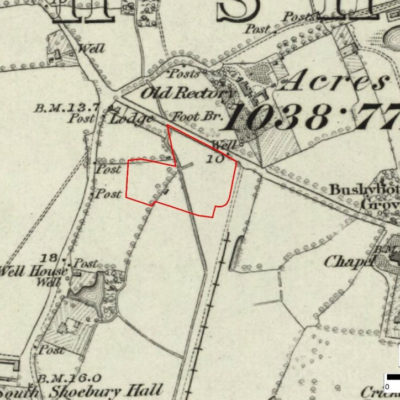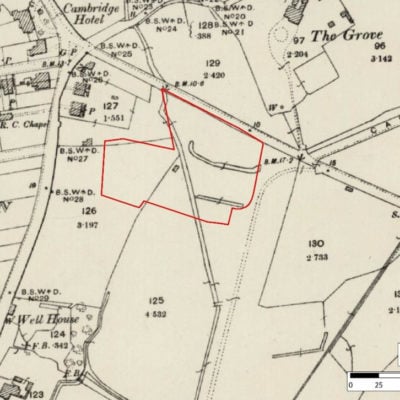Archaeological Desk-Based Assessment, Essex
Border Archaeology (BA) were commissioned to carry out an Archaeological Desk-Based Assessment (ADBA) in advance of a proposed development scheme at the land in Essex.
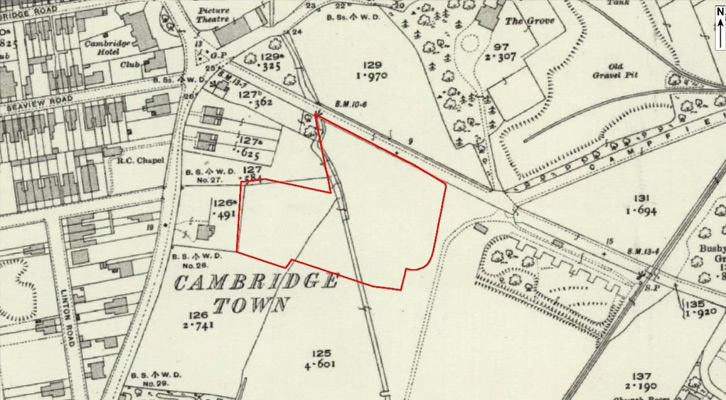
In Brief
Archaeological Desk-Based Assessment
Location: EssexKey Points
- The site does not contain any designated (protected) heritage assets such as listed buildings, scheduled monuments or registered parks and gardens.
- In addition to the previous archaeological investigations that have taken place c. 470m east of the site at the former Shoebury Garrison complex, there have been two further archaeological investigations within the 1km study area.
- Within the study area there are 29 recorded finds or features dated to the prehistoric period, with a concentration of significant Palaeolithic, Mesolithic and Neolithic finds recorded to the west of the site
Summary
The scheme comprises the removal of the existing spoil heap and the construction of a supermarket with associated car parking and access road and part culverting of an existing drainage ditch.
This Archaeological Desk Based Assessment examines the impact of the proposed development on buried heritage assets (archaeological remains) that may be present within the site. Although above ground heritage assets are not discussed in detail, they have been noted where they assist in the archaeological interpretation of the site.
Results
The site is considered to have a High potential for palaeoenvironmental remains and a Moderate to High potential to contain deposits, features and finds of prehistoric date. This assessment reflects the location of the site within an area of Tidal Flat Deposits derived from the River Thames Estuary with surrounding River Terrace Gravels. It would therefore have been on the edge of an area favoured for prehistoric settlement with reliable natural resources. Excavations within the vicinity of the Shoeburyness Old Ranges and Gunners Park, to the east and south of the site, have also revealed significant potential for encountering multi-period prehistoric remains ranging in date from the Mesolithic to the Iron Age.
The site has a Low potential for archaeological remains dating to all other periods.
The main impact upon the site would be from the excavation of foundations for the new supermarket, and associated service trenches. Topsoil clearance, landscaping and access road construction would also impact upon any archaeological deposits, if present.
Taking into account the extent of the site, along with the identified potential for prehistoric remains and features and deposits of palaeoenvironmental interest, it is recommended that archaeological monitoring take place on any proposed preliminary geotechnical investigations on the site. The purpose of this would be to establish, at a preliminary stage, the potential nature, extent and depth of any palaeoenvironmental or archaeological deposits, should they be present.
Based on the results, further investigation may be required, possibly in the form of archaeological evaluation, to clarify the nature, date and significance of any remains identified. The remains would inform an appropriate mitigation strategy which might comprise targeted archaeological excavation in advance of construction and/or a watching brief during ground works for remains of lesser significance, in order to ensure that archaeological assets are not removed without record.

